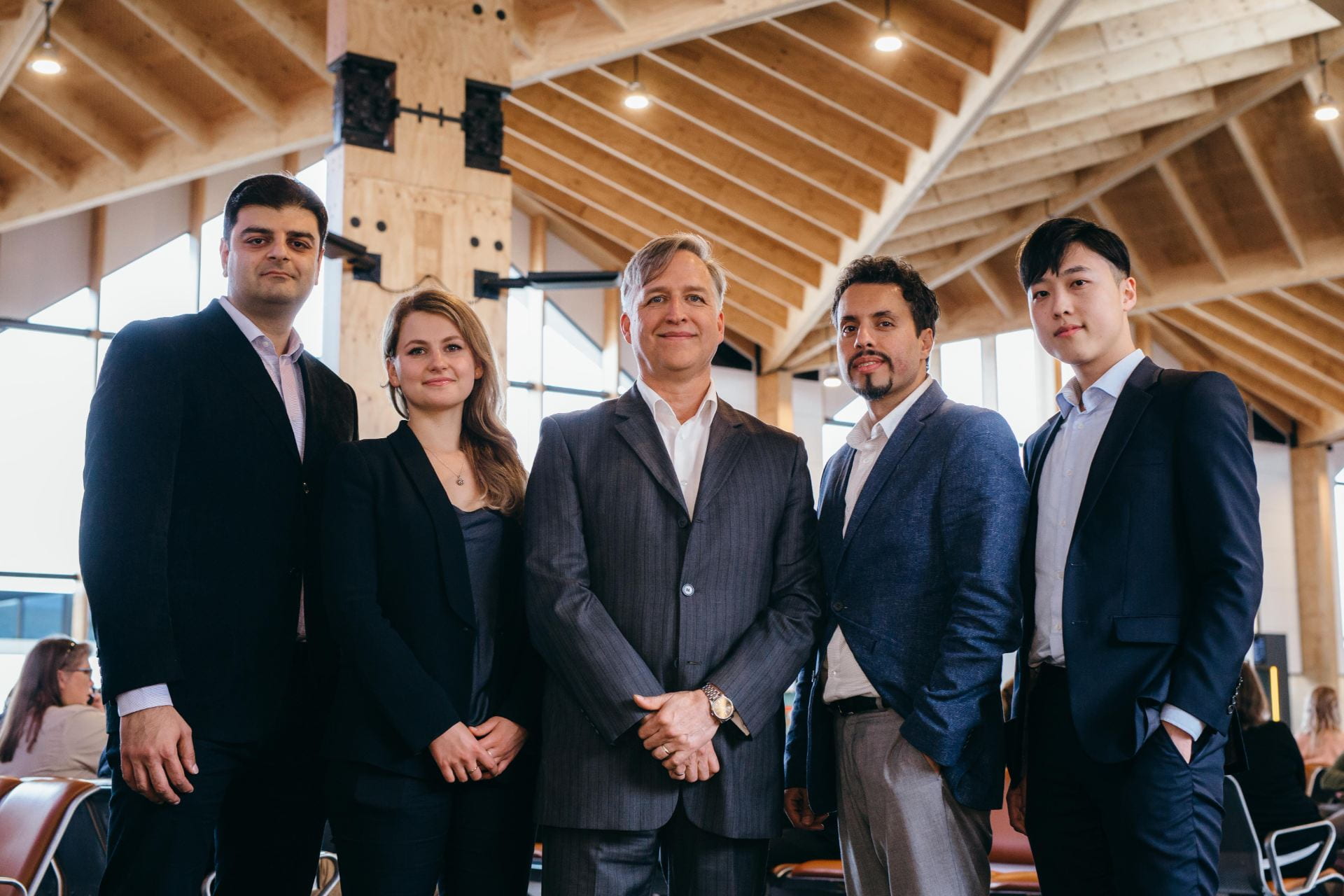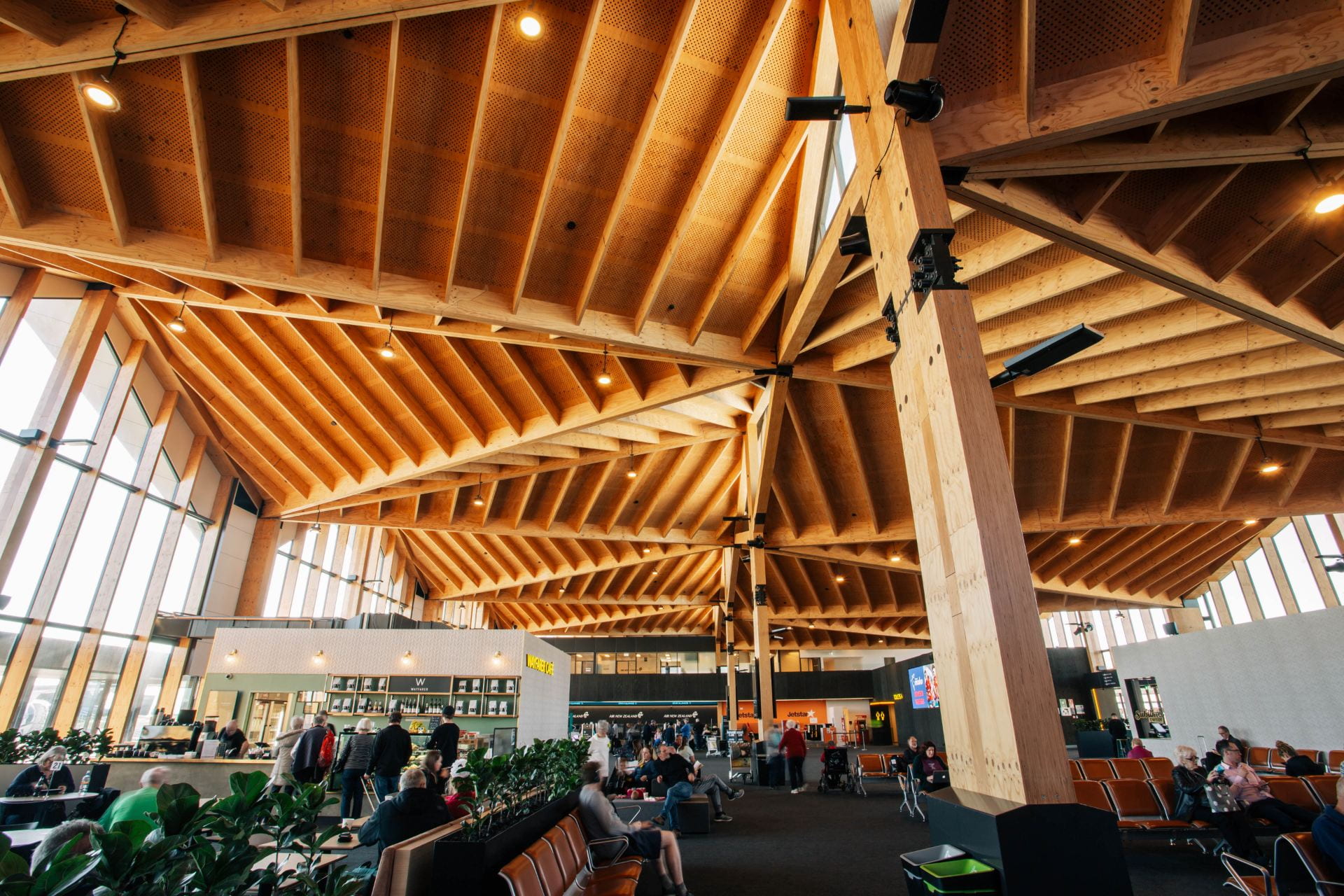NEWSROOM
Earthquake innovation shakes up global construction industry
9 January 2024
The team behind engineering venture Tectonus, which emerged from Velocity, the entrepreneurship development programme organised by the University of Auckland Business School’s Centre for Innovation and Entrepreneurship (CIE), was moved by the impact of the Christchurch earthquakes, prompting them to innovate a better damping connection. Their invention automatically readjusts buildings post-quake, providing seismic resilience for both new and existing structures without needing post-event maintenance, offering cost and space efficiency.
Comprising academic staff and former students from Waipapa Taumata Rau, the University of Auckland, the founders of Tectonus entered the Velocity $100k Challenge in 2015, impressing judges with their device. Their efforts have since been acknowledged with industry accolades, including being finalists in the 2017 New Zealand Innovation Awards, winning the 2019 Trans-Tasman Innovation and Growth Awards and being finalists in the 2020 NZ Hi Tech Awards.
For Dr Pierre Quenneville, CTO at Tectonus and Professor of timber design, the Christchurch earthquakes were an eye opener. Some buildings withstood the earthquake, but others were badly damaged, putting businesses and lives at risk.. Pierre realised the need for engineers to find more sustainable ways of construction. His vision was the development of a technology that would stabilise buildings during disasters. As a timber professor, Pierre started with timber buildings, but once the concept was developed and proven by his team, found the idea worked for steel and concrete buildings as well, both new ones and old ones needing reinforcements. Realising the commercial potential of the idea, Tectonus was founded.
Through seismic connections that dampen and self-center, Tectonus offers buildings protection through earthquakes and aftershocks. Another innovation is their seismic anchor for liquid storage tanks which is a resilient solution that does not require repairs after an earthquake. “It works for new tanks and old ones, too. In existing tanks, the anchor allows them to move a bit during a quake and then return to their place without any damage. In new tanks, it lets the walls and the concrete underneath be thinner, saving money.” With previous successes with wine and dairy tanks, Tectonus’ solution is also applied to water tanks.
Currently, Tectonus focus is on institutional, commercial and industrial buildings. However, they have plans up their sleeves for a solution specific to residential buildings.
Given the technology’s potential, it is not surprising that Tectonus is building a pipeline of projects outside New Zealand – in the USA, Canada and Japan. Vancouver has been their starting point in North America, where they focus on timber structures but are expanding to steel and concrete projects. Recently, Tectonus began approaching California, Oregon, and Washington state. Different laws and mindsets among engineers means the strategy for entering these markets has varied. In the future Tectonus seeks to expand to Europe as well as other parts of the Ring of Fire – the tectonic belt of volcanoes and earthquakes which surrounds much of the Pacific. Considering the increase in seismic acitivity around the Ring of Fire, Tectonus’s technology has great potential to help future-proof buildings in the Asia-Pacific.
Domestically, there is a growing awareness of the need for earthquake protection, with clients caring about business continuity and realising the shortcomings of current building codes.
What makes Tectonus’ solution unique is that they do not require repairs after earthquakes. “While most other damper technologies or seismic resistant technologies apart from viscous dampers have portions that yield, meaning that the inherent steel components are transformed, Tectonus’ solutions rely on friction alone. The device to resist the main shock and as well as subsequent aftershocks, as it is designed so that the fuse itself is the friction part between the plates”, Pierre explains.
Looking back on how far they have come, Pierre remembers the early days and is keen to encourage other aspiring entrepreneurs to get involved with Velocity, UniServices and other opportunities offered through the University of Auckland’s entrepreneurial ecosystem. “Initially, we had a concept, but the environment of collaborative competition, guidance from mentors, and crafting a business plan that CIE offered was instrumental in transforming our academic notion into a potentially world-changing idea. Being part of a group that shared similar goals was impactful and made us realise the tangible impact academia could have beyond papers. It shifted my focus to implementing practical solutions in the real world. I deeply value the support and mentorship received from CIE and I feel compelled to give back.”

The Tectonus founders with Pierre Quenneville in the middle


The Tectonus founders with Pierre Quenneville in the middle

9 January 2024
The team behind engineering venture Tectonus, which emerged from Velocity, the entrepreneurship development programme organised by the University of Auckland Business School’s Centre for Innovation and Entrepreneurship (CIE), was moved by the impact of the Christchurch earthquakes, prompting them to innovate a better damping connection. Their invention automatically readjusts buildings post-quake, providing seismic resilience for both new and existing structures without needing post-event maintenance, offering cost and space efficiency.
Comprising academic staff and former students from Waipapa Taumata Rau, the University of Auckland, the founders of Tectonus entered the Velocity $100k Challenge in 2015, impressing judges with their device. Their efforts have since been acknowledged with industry accolades, including being finalists in the 2017 New Zealand Innovation Awards, winning the 2019 Trans-Tasman Innovation and Growth Awards and being finalists in the 2020 NZ Hi Tech Awards.
For Dr Pierre Quenneville, CTO at Tectonus and Professor of timber design, the Christchurch earthquakes were an eye opener. Some buildings withstood the earthquake, but others were badly damaged, putting businesses and lives at risk.. Pierre realised the need for engineers to find more sustainable ways of construction. His vision was the development of a technology that would stabilise buildings during disasters. As a timber professor, Pierre started with timber buildings, but once the concept was developed and proven by his team, found the idea worked for steel and concrete buildings as well, both new ones and old ones needing reinforcements. Realising the commercial potential of the idea, Tectonus was founded.
Through seismic connections that dampen and self-center, Tectonus offers buildings protection through earthquakes and aftershocks. Another innovation is their seismic anchor for liquid storage tanks which is a resilient solution that does not require repairs after an earthquake. “It works for new tanks and old ones, too. In existing tanks, the anchor allows them to move a bit during a quake and then return to their place without any damage. In new tanks, it lets the walls and the concrete underneath be thinner, saving money.” With previous successes with wine and dairy tanks, Tectonus’ solution is also applied to water tanks.
Currently, Tectonus focus is on institutional, commercial and industrial buildings. However, they have plans up their sleeves for a solution specific to residential buildings.
Given the technology’s potential, it is not surprising that Tectonus is building a pipeline of projects outside New Zealand – in the USA, Canada and Japan. Vancouver has been their starting point in North America, where they focus on timber structures but are expanding to steel and concrete projects. Recently, Tectonus began approaching California, Oregon, and Washington state. Different laws and mindsets among engineers means the strategy for entering these markets has varied. In the future Tectonus seeks to expand to Europe as well as other parts of the Ring of Fire – the tectonic belt of volcanoes and earthquakes which surrounds much of the Pacific. Considering the increase in seismic acitivity around the Ring of Fire, Tectonus’s technology has great potential to help future-proof buildings in the Asia-Pacific.
Domestically, there is a growing awareness of the need for earthquake protection, with clients caring about business continuity and realising the shortcomings of current building codes.
What makes Tectonus’ solution unique is that they do not require repairs after earthquakes. “While most other damper technologies or seismic resistant technologies apart from viscous dampers have portions that yield, meaning that the inherent steel components are transformed, Tectonus’ solutions rely on friction alone. The device to resist the main shock and as well as subsequent aftershocks, as it is designed so that the fuse itself is the friction part between the plates”, Pierre explains.
Looking back on how far they have come, Pierre remembers the early days and is keen to encourage other aspiring entrepreneurs to get involved with Velocity, UniServices and other opportunities offered through the University of Auckland’s entrepreneurial ecosystem. “Initially, we had a concept, but the environment of collaborative competition, guidance from mentors, and crafting a business plan that CIE offered was instrumental in transforming our academic notion into a potentially world-changing idea. Being part of a group that shared similar goals was impactful and made us realise the tangible impact academia could have beyond papers. It shifted my focus to implementing practical solutions in the real world. I deeply value the support and mentorship received from CIE and I feel compelled to give back.”
EMAIL
CIE@AUCKLAND.AC.NZ
POSTAL ADDRESS
THE UNIVERSITY OF AUCKLAND BUSINESS SCHOOL
PRIVATE BAG 92019, AUCKLAND














